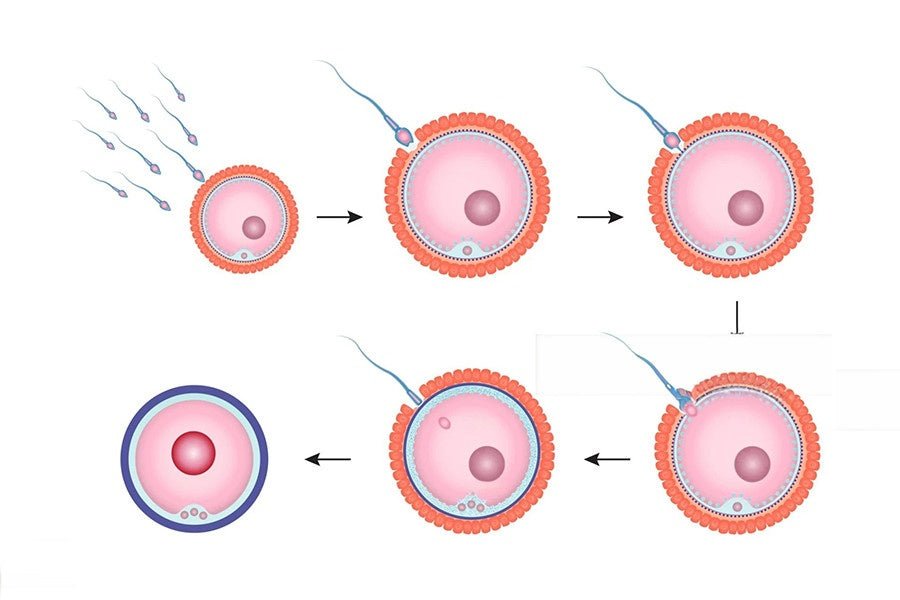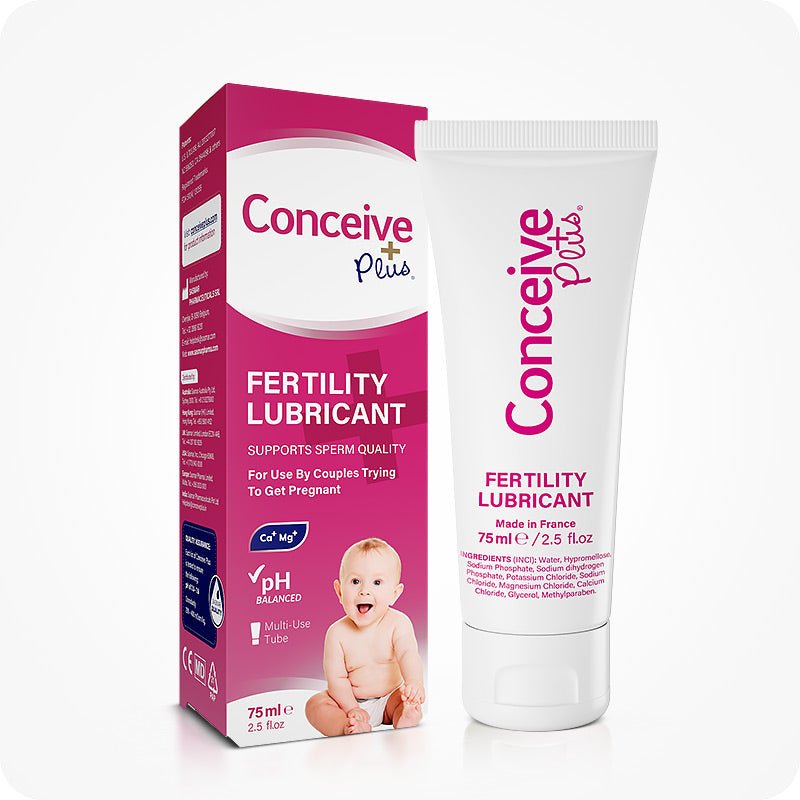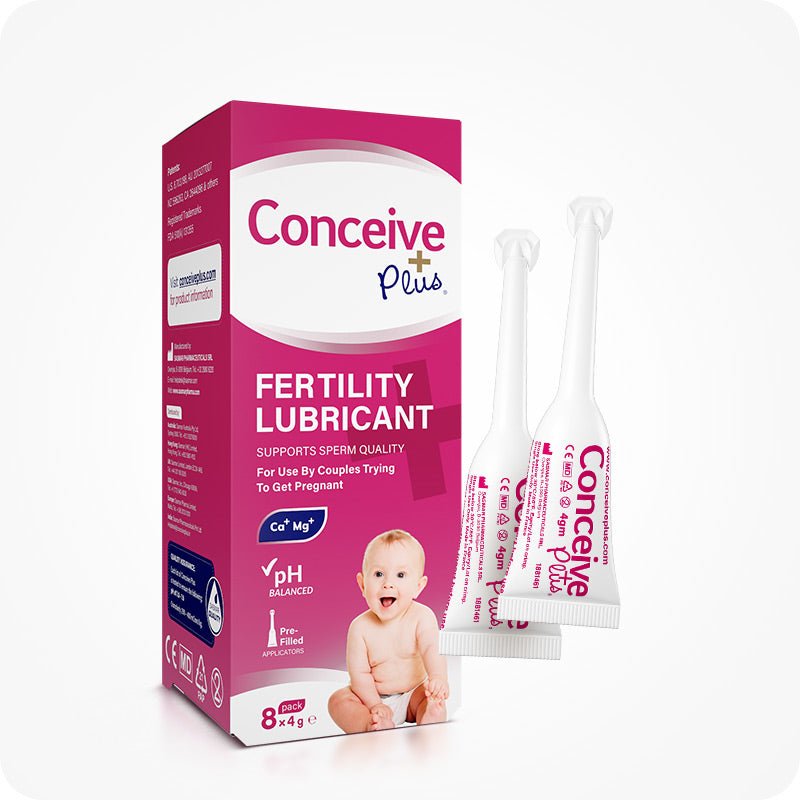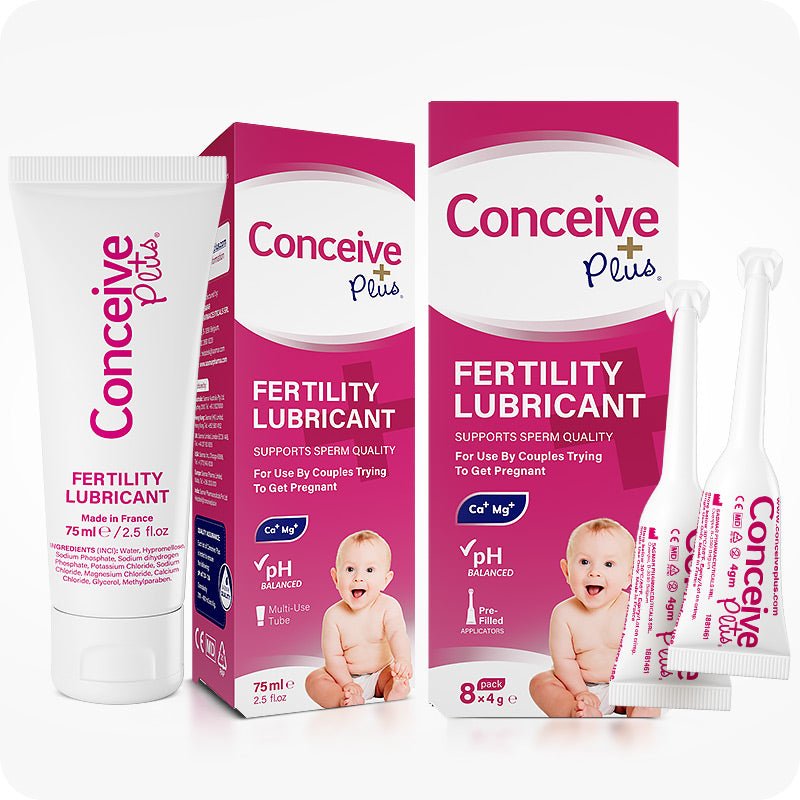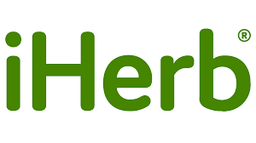The Best PCOS Diet Guide – Foods to Eat and Avoid for Hormonal Health
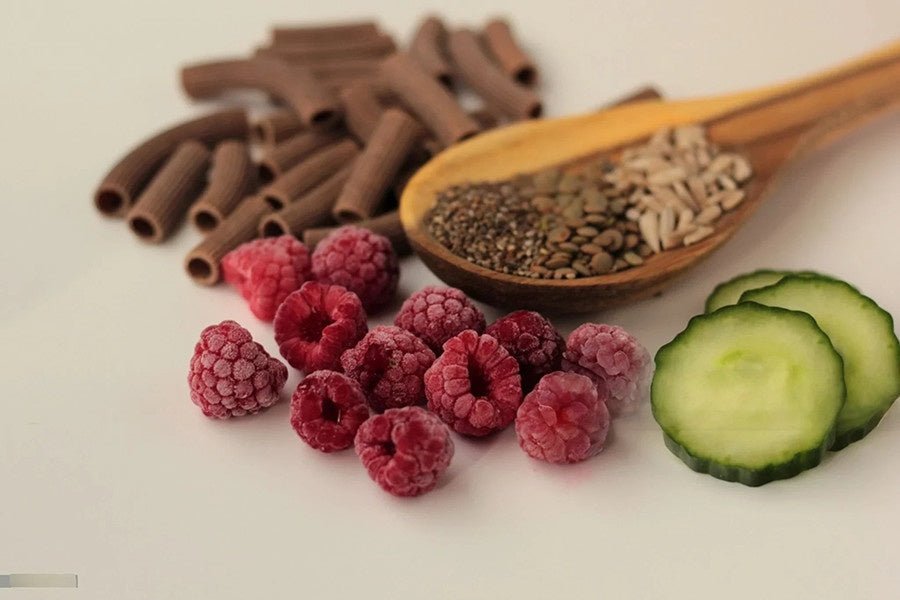
A PCOS diet often becomes a central focus for many individuals who want to support more stable cycles, lessen certain symptoms, and pursue overall well-being. The best foods for polycystic ovarian syndrome include whole grains, lean proteins, and a variety of fresh vegetables, which can support hormone balance and reduce insulin resistance over time [1]. It can reduce some hormonal disruptions connected to insulin and can also make big differences in how someone feel from day to day. Dietary modifications are never a magic fix, but they can help maintain consistent energy levels and provide key nutrients, especially for those dealing with shifting hormone patterns.
Understanding Polycystic Ovary Syndrome
Polycystic ovarian syndrome has been tied with several hormonal signals. It can lead to cysts on ovaries, issues around menstrual timing, or an overproduction of specific hormones. This link between PCOS and hormones is closely related to PCOS and diet choices. Many individuals with PCOS observe that lowering sugar spikes and refining their meal structure can lessen certain issues. It’s not a quick process. Sometimes, the body may respond slowly, but that’s normal.
Varying one’s eating habits might help correct some imbalances. These changes align well with a PCOS disease diet that tries to cut out excess refined carbs or super processed meals [2]. Many find that focusing on fresh produce, lean proteins, and stable fats helps them feel better. More consistent cycles or slight improvements in skin and hair are possible, though not guaranteed for everyone.
Why a Balanced Eating Plan Matters
A balanced eating plan is far more than limiting calories. It often revolves around stable blood sugar, moderate portion sizes, and nutrient density. A best diet for PCOS pattern can involve adding whole grains, legumes, and vegetables to tame sudden blood sugar rises. Some meals might seem dull at first, but variety can keep it interesting. Eating moderate amounts of protein can also keep hunger in check.
One reason this concept is so powerful is because insulin overproduction often appears in people with PCOS. That’s where focusing on a healthy diet for PCOS can be quite valuable. It’s always recommended to check labels and watch for hidden sugars or trans fats that aggravate hormone disruptions [3]. Reducing them can create a more pleasant day-to-day feeling for many individuals trying to calm symptom triggers.
The Basics of a PCOS Disease Diet
A balanced PCOS disease diet tries to avoid processed meals that cause random spikes in insulin [4]. This shift typically means adding vegetables, fruits, nuts, seeds, and good grains. Lean meats or seafood can also appear in many menus. If one likes a sweet flavor, fresh fruit or even a little dark chocolate might be a better choice than sugary pastries. That does not mean all sweets are banned, but small adjustments help many bodies function with less stress.
Some also find it helpful to include sufficient fiber, because fiber can slow down glucose absorption, crucial for stable energy. It might be called a proper diet for PCOS approach, ensuring that vitamins and minerals come first. Choices like brown rice, oats, or barley can replace refined carbs so that each meal has a more balanced effect on hormones.
Foods to Eat for Better Hormonal Health
It can be beneficial to center meals around unprocessed, vibrant options. Many call them foods to eat with PCOS. Choices like leafy greens, peppers, broccoli, or cauliflower deliver vitamins such as C, K, and B. Whole grains can provide steady carbs, which may lower the likelihood of blood sugar chaos. Salmon and sardines contain omega-3 fats that might encourage normal hormone signaling.
Varied color in meals helps maintain a broad nutrient spread. This might count as foods good for PCOS since it delivers fiber, antioxidants, and protein [5]. It’s wise to consider portion sizes, so the body gets the nourishment it needs without extreme spikes in glucose or inflammation. That can be a foundation for stable cycles and healthier daily rhythms. Additionally, incorporating the best vitamins for fertility can further support hormonal balance and reproductive health.
Foods to Avoid for Improved Hormone Balance
Certain problem items, labeled as foods to avoid with PCOS or foods to avoid with polycystic ovaries, often generate blood sugar spikes or heightened inflammation. White bread, pastries, soda, and candy are prime examples, because they usually deliver quick sugar with few nutrients. Some also find that heavily fried dishes or processed meats, loaded with saturated fats, can worsen metabolic difficulties [6]. Not everyone must give up every treat, but limiting them helps many people feel more stable.
Keeping an eye on extremely salty snacks is also key, as high sodium can pair poorly with any weight management attempts. It’s simpler to keep track of nutritional intake by scanning labels, especially for hidden sugars in condiments or packaged sauces. This helps create a polycystic ovaries diet approach that is more supportive of balanced hormones and provides essential hormone support.
Key Nutrients to Consider
Anyone exploring PCOS and nutrition often focuses on vitamins and minerals that promote healthier hormone function. Vitamin D can influence insulin sensitivity, while vitamin E contributes antioxidants. B-complex vitamins back energy production and metabolism. Calcium is essential for bone health and muscle function. Magnesium helps muscle relaxation and nerve signals. Iron is crucial for healthy red blood cells. Meanwhile, zinc can be vital for hair growth and hormone metabolism. Selenium provides some antioxidant effects [7].
These nutrients fit neatly into a variety of meals. The main goal is to have a wide range of whole foods so that each day’s menu covers these micronutrients. That’s part of a supportive PCOS treatment diet framework. Busy schedules can make it tricky, so some people batch-cook or rely on simple meal combos like brown rice, leafy vegetables, and lean protein.
Building a Daily Meal Plan
Many who investigate food for PCOS want a day-to-day structure. One approach starts with a moderate breakfast containing eggs or oats plus some fruit. Lunch might feature a hearty salad with beans and a drizzle of olive oil. Dinner might combine a lean protein, roasted veggies, and brown rice. Healthy snacks could be almonds, yogurt, or veggie sticks with hummus.
This flexible guide can prevent constant sugar highs or lows. If it helps, a little planning or meal prepping is recommended [8]. That ensures each day includes PCOS friendly foods that keep the body comfortable. Trying to incorporate a variety can stop boredom. From time to time, a small indulgence can be included, as long as it doesn’t derail the overall plan.
The Role of Weight Management
Weight gain is not universal for PCOS, but many individuals do face it due to insulin disruptions. That’s why a diet for PCOS often sets the stage for gradual weight shifts. Eating more nutritious items, plus limiting junk food, usually fosters better metabolic efficiency. Some see improvements in monthly cycle consistency after losing a modest percentage of body weight [9]. Others find their cravings diminish, helping them maintain a more balanced routine over time.
Lifestyle changes that include movement or stress relief can support the results of a PCOS nutrition approach. That might mean moderate exercise, gentle yoga, or even short daily walks. Combining healthy meals with a bit of activity can yield more stable hormone function.
Lifestyle Tips to Complement a Diet for PCOS
Tweaking daily habits can make a difference. Good sleep helps reduce cortisol surges, which can otherwise harm metabolic goals. Practicing mindful eating, taking time to chew, and noticing true hunger cues can prevent overeating. These small details harmonize well with a food for polycystic ovary plan, especially for those seeking better insulin regulation.
Hydration also matters. Water supports normal body processes and might reduce random snack cravings [10]. Minimal consumption of sugary drinks is recommended. Some even switch to sparkling water or unsweetened tea to keep cravings lower. Combining these tips with a good PCOS diet is a step many find empowering for daily stability.
Focusing on Fertility
Polycystic ovary concerns often show up in fertility journeys. That’s where a best foods for PCOS strategy may encourage improved ovulation or cycle regularity. Fiber-rich meals, combined with moderate protein and balanced fats, might give the body a safer metabolic environment for reproductive hormones [11]. But it’s rarely an instant fix. It’s more about consistent daily routines that create better circumstances over months.
Some also wonder about what to eat with PCOS. Meals that don’t cause spikes, plus nutrients like folate, can be a supportive approach for those aiming to conceive. A variety of produce and healthy proteins may help the body remain well-nourished, which can matter when dealing with pregnancy hopes.
Putting It All Together
A polycystic ovarian disease diet is essentially a pattern that respects hormone balance. Many call it a what is the best diet for PCOS question, but the truth is, no single blueprint fits everyone. The general logic is: pick nutrient-dense items, skip excessive sugar or refined carbs, and maintain portion awareness. That can enhance energy, mood, and maybe cycle timing. People also watch out for triggers like sugary snacks that cause energy crashes or overactive insulin.
Protein sources like fish, poultry, or beans can keep cravings in check [12]. Meanwhile, complex carbs such as quinoa or barley deliver steady energy. The combination can boost the body’s overall resilience. Another important piece is daily or weekly reflection to see which foods are working well and which might set off hormone swings.
The Bottom Line
A PCOS diet holds real potential for stabilizing day-to-day life and giving the body better hormone equilibrium. Meal patterns that include vegetables, lean protein, slow-digesting carbs, and key micronutrients are frequently beneficial. Finding a sweet spot for personal preferences also maintains consistency. Sticking with balanced eating, along with simple movement, can support those who aim to lessen certain PCOS symptoms or feel more energetic in general [13]. Steady change over time is possible, though it might take patience and mindful choices each day. This final reminder is that a well-chosen plan can go a long way, whether it’s about everyday wellness or fertility-focused aims.
FAQs
Is there a link between PCOS foods and improved energy?
Some folks experience better energy when they pick PCOS foods to eat like veggies, lean proteins, and whole grains instead of refined sugars or fried snacks.
Why do people discuss PCOS foods to avoid?
A few items, such as refined carbs and super-sugary drinks, might disrupt insulin regulation. They’re sometimes labeled as polycystic ovaries foods to avoid because they exacerbate certain issues.
Are colorful produce choices part of a polycystic ovaries diet?
They usually are. Produce variety can give beneficial vitamins and minerals, essential for polycystic ovary syndrome nutrition. It helps maintain stable blood sugar and supports overall health.
How about quick snacks for partial hunger?
Hummus with carrots or an apple with nut butter can be suitable. These align with a PCOS friendly foods plan by keeping insulin levels more even.
Does skipping meals help a PCOS treatment diet?
Skipping meals often leads to rebound hunger and can confuse the metabolism. Balanced, regular eating is often recommended in a food to eat in PCOS approach.
Citations
- Moran, L. J., Ko, H., Misso, M., Marsh, K., Noakes, M., Talbot, M., Frearson, M., Thondan, M., Stepto, N., & Teede, H. J. (2013). Dietary composition in the treatment of polycystic ovary syndrome: a systematic review to inform evidence-based guidelines. Journal of the Academy of Nutrition and Dietetics. Available at: https://pubmed.ncbi.nlm.nih.gov/23420000/
- Farshchi, H., Rane, A., Love, A., & Kennedy, R. L. (2007). Diet and nutrition in polycystic ovary syndrome (PCOS): pointers for nutritional management. Journal of obstetrics and gynaecology : the journal of the Institute of Obstetrics and Gynaecology. Available at: https://pubmed.ncbi.nlm.nih.gov/18097891/
- Marsh, K. A., Steinbeck, K. S., Atkinson, F. S., Petocz, P., & Brand-Miller, J. C. (2010). Effect of a low glycemic index compared with a conventional healthy diet on polycystic ovary syndrome. The American journal of clinical nutrition. Available at: https://pubmed.ncbi.nlm.nih.gov/20484445/
- Moran, L. J., Pasquali, R., Teede, H. J., Hoeger, K. M., & Norman, R. J. (2009). Treatment of obesity in polycystic ovary syndrome: a position statement of the Androgen Excess and Polycystic Ovary Syndrome Society. Fertility and sterility. Available at: https://pubmed.ncbi.nlm.nih.gov/19062007/
- González F. (2012). Inflammation in Polycystic Ovary Syndrome: underpinning of insulin resistance and ovarian dysfunction. Steroids. Available at: https://pubmed.ncbi.nlm.nih.gov/22178787/
- egro, R. S., Kunselman, A. R., Dodson, W. C., & Dunaif, A. (1999). Prevalence and predictors of risk for type 2 diabetes mellitus and impaired glucose tolerance in polycystic ovary syndrome: a prospective, controlled study in 254 affected women. The Journal of clinical endocrinology and metabolism. Available at: https://pubmed.ncbi.nlm.nih.gov/9920077/
- Razavi, M., Jamilian, M., Kashan, Z. F., Heidar, Z., Mohseni, M., Ghandi, Y., Bagherian, T., & Asemi, Z. (2016). Selenium Supplementation and the Effects on Reproductive Outcomes, Biomarkers of Inflammation, and Oxidative Stress in Women with Polycystic Ovary Syndrome. Hormone and metabolic research = Hormon- und Stoffwechselforschung = Hormones et metabolisme. Available at: https://pubmed.ncbi.nlm.nih.gov/26267328/
- Teede, H. J., Misso, M. L., Costello, M. F., Dokras, A., Laven, J., Moran, L., Piltonen, T., Norman, R. J., & International PCOS Network (2018). Recommendations from the international evidence-based guideline for the assessment and management of polycystic ovary syndrome. Fertility and sterility. Available at: https://pubmed.ncbi.nlm.nih.gov/30033227/
- Huber-Buchholz, M. M., Carey, D. G., & Norman, R. J. (1999). Restoration of reproductive potential by lifestyle modification in obese polycystic ovary syndrome: role of insulin sensitivity and luteinizing hormone. The Journal of clinical endocrinology and metabolism. Available at: https://pubmed.ncbi.nlm.nih.gov/10199797/
- tookey, J. D., Constant, F., Popkin, B. M., & Gardner, C. D. (2008). Drinking water is associated with weight loss in overweight dieting women independent of diet and activity. Obesity. Available at: https://pubmed.ncbi.nlm.nih.gov/18787524/
- Moran, L. J., Brinkworth, G., Noakes, M., & Norman, R. J. (2006). Effects of lifestyle modification in polycystic ovarian syndrome. Reproductive biomedicine online. Available at: https://pubmed.ncbi.nlm.nih.gov/16790100/
- Douglas, C. C., Norris, L. E., Oster, R. A., Darnell, B. E., Azziz, R., & Gower, B. A. (2006). Difference in dietary intake between women with polycystic ovary syndrome and healthy controls. Fertility and sterility. Available at: https://pubmed.ncbi.nlm.nih.gov/16762348/
- Harrison, C. L., Lombard, C. B., Moran, L. J., & Teede, H. J. (2011). Exercise therapy in polycystic ovary syndrome: a systematic review. Human reproduction update. Available at: https://pubmed.ncbi.nlm.nih.gov/20833639/





